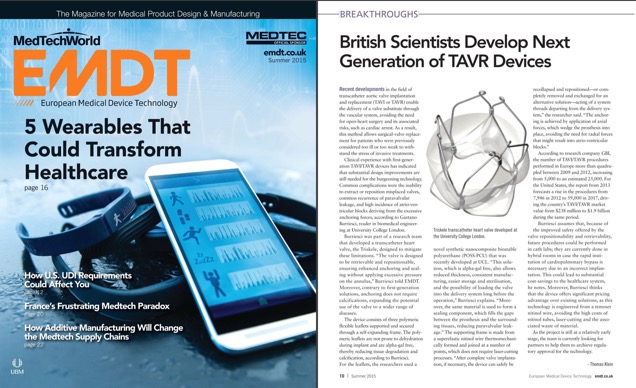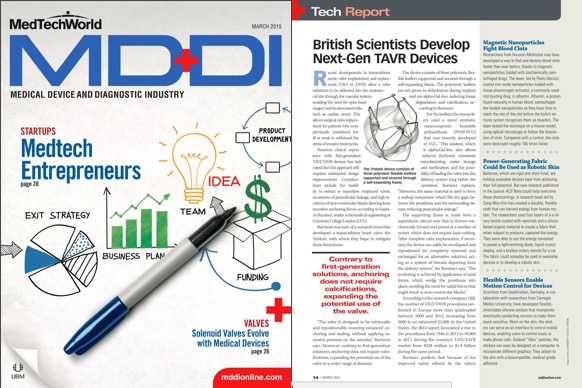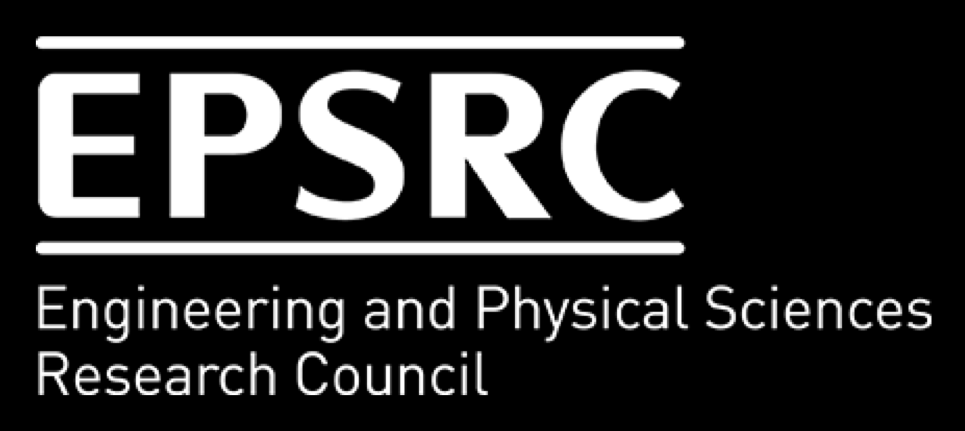TRISKELE TRANSCATHETER AORTIC VALVE
Due to the increasing ageing of the population and consequent change in the main heart valve pathology, a growing group of patients is currently declined from surgical valve replacement, because they are judged too ill or weak to withstand the stress of invasive treatments. Transcatheter aortic valve implantation/replacement (TAVI or TAVR) represents an ideal answer to the need of this rapidly expanding patients’ population, as it allows delivering a valve substitute into the anatomical site through the vascular system, avoiding the need of open heart surgery and its associated risks (e.g. cardiac arrest/restart, extracorporeal circulation etc). Clinical experience with this novel approach has clearly indicated that it is feasible and promising, though it still requires substantial design improvements to enhance the safety and effectiveness of the treatment.
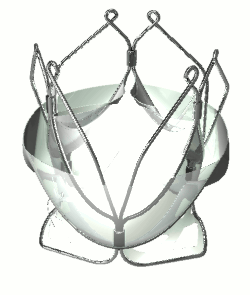 We have recently designed and manufactured a novel TAVI device, the TRISKELE, which overcomes the main limitations experienced with current solutions. The research is coordinated by Dr Burriesci, and benefits from the cross-disciplinary collaboration of the UCL Centre for Nanotechnology & Regenerative Medicine and the UCLH Heart Hospital. This valve substitute is fully retrievable/repositionable, and ensures enhanced anchoring and sealing. Moreover, the functional leaflets are made of a novel synthetic functional nanocomposite polymer suitable for heart valve applications, which has been developed at UCL.
We have recently designed and manufactured a novel TAVI device, the TRISKELE, which overcomes the main limitations experienced with current solutions. The research is coordinated by Dr Burriesci, and benefits from the cross-disciplinary collaboration of the UCL Centre for Nanotechnology & Regenerative Medicine and the UCLH Heart Hospital. This valve substitute is fully retrievable/repositionable, and ensures enhanced anchoring and sealing. Moreover, the functional leaflets are made of a novel synthetic functional nanocomposite polymer suitable for heart valve applications, which has been developed at UCL.
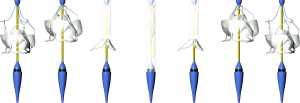
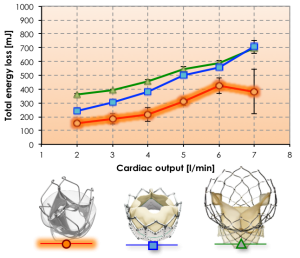 In vitro comparative tests with first generation solutions have shown that the effective orifice area of the TRISKELE is similar to TAVI devices currently in the market, while the regurgitant fraction is improved, determining lower ventricular energy loss during cardiac cycle and better valve performance.
In vitro comparative tests with first generation solutions have shown that the effective orifice area of the TRISKELE is similar to TAVI devices currently in the market, while the regurgitant fraction is improved, determining lower ventricular energy loss during cardiac cycle and better valve performance.
Accelerated Wear Durability testing has demonstrated that the developed device meets and largely exceed the durability requirement for flexible leaflets prosthetic valves (> 200 million cycles).
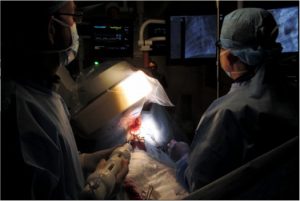 The TRISKELE valve device was for the first time implanted in an ovine model (about 50 kg) on the 29th of May 2013, by Mike Mullen and John Yap (UCLH Heart Hospital), at IMM Recherche, Paris. The valve was collapsed in the delivery system and successfully implanted off-pump via brachiocephalic approach in orthotopic position, using continuous ultrasonic and fluoroscopic guidance. Dr Mullen successfully implanted and extracted three valves of different sizes (23 mm, 26 mm and 29 mm). Each valve was retrieved into the catheter and repositioned, after assessing their optimal positioning and hemodynamic performance.
The TRISKELE valve device was for the first time implanted in an ovine model (about 50 kg) on the 29th of May 2013, by Mike Mullen and John Yap (UCLH Heart Hospital), at IMM Recherche, Paris. The valve was collapsed in the delivery system and successfully implanted off-pump via brachiocephalic approach in orthotopic position, using continuous ultrasonic and fluoroscopic guidance. Dr Mullen successfully implanted and extracted three valves of different sizes (23 mm, 26 mm and 29 mm). Each valve was retrieved into the catheter and repositioned, after assessing their optimal positioning and hemodynamic performance.
No interference of coronary blood flow was observed for the two smallest sizes, more suitable for the animal anatomy, and good acute valve function with no significant regurgitation was confirmed for all devices.
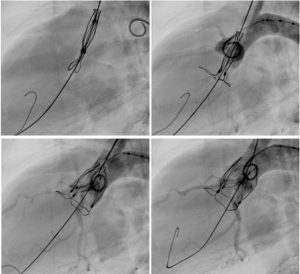

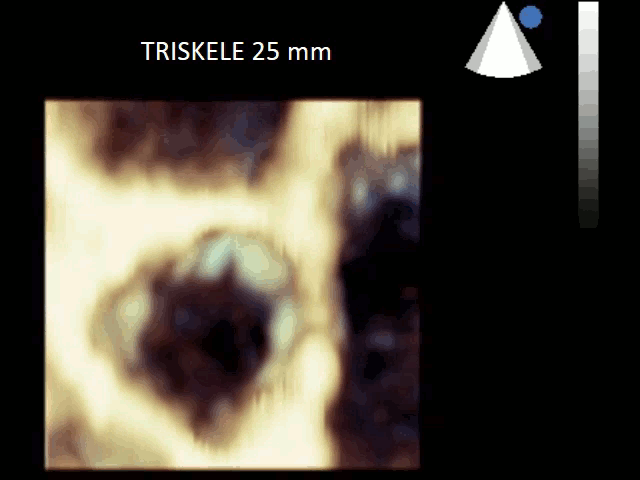
 Close
Close


 We have recently designed and manufactured a novel TAVI device, the TRISKELE, which overcomes the main limitations experienced with current solutions.
We have recently designed and manufactured a novel TAVI device, the TRISKELE, which overcomes the main limitations experienced with current solutions.
 In vitro comparative tests with first generation solutions have shown that the effective orifice area of the TRISKELE is similar to TAVI devices currently in the market, while the regurgitant fraction is improved, determining lower ventricular energy loss during cardiac cycle and better valve performance.
In vitro comparative tests with first generation solutions have shown that the effective orifice area of the TRISKELE is similar to TAVI devices currently in the market, while the regurgitant fraction is improved, determining lower ventricular energy loss during cardiac cycle and better valve performance. The TRISKELE valve device was for the first time implanted in an ovine model (about 50 kg) on the 29th of May 2013, by Mike Mullen and John Yap (UCLH Heart Hospital), at IMM Recherche, Paris. The valve was collapsed in the delivery system and successfully implanted off-pump via brachiocephalic approach in orthotopic position, using continuous ultrasonic and fluoroscopic guidance. Dr Mullen successfully implanted and extracted three valves of different sizes (23 mm, 26 mm and 29 mm). Each valve was retrieved into the catheter and repositioned, after assessing their optimal positioning and hemodynamic performance.
The TRISKELE valve device was for the first time implanted in an ovine model (about 50 kg) on the 29th of May 2013, by Mike Mullen and John Yap (UCLH Heart Hospital), at IMM Recherche, Paris. The valve was collapsed in the delivery system and successfully implanted off-pump via brachiocephalic approach in orthotopic position, using continuous ultrasonic and fluoroscopic guidance. Dr Mullen successfully implanted and extracted three valves of different sizes (23 mm, 26 mm and 29 mm). Each valve was retrieved into the catheter and repositioned, after assessing their optimal positioning and hemodynamic performance. 










